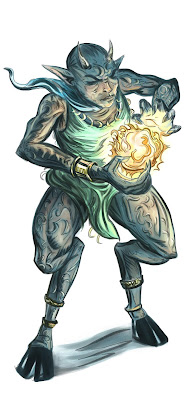A History of violence. Part 3
 In this blog post I will focus an underused combat mechanic: Chase Sequences. This type of "combat" is very common in horror movies, but quite rare in horror games. I will briefly discuss how we used it in Penumbra, problems it causes and how some other games have implemented it.
In this blog post I will focus an underused combat mechanic: Chase Sequences. This type of "combat" is very common in horror movies, but quite rare in horror games. I will briefly discuss how we used it in Penumbra, problems it causes and how some other games have implemented it.In Penumbra we used chase sequences on three occasions in the entire series and and each time it was a highly scripted event. There was always little room for the player to move in and mostly a very clear path. The first two chase sequences were in Overture and both involved being chased by a giant worm. In both of these the player had to complete a specific obstacle along the way and failure resulted in death and a restart of the chase. While a lot of people said that they liked this, a large amount also disliked this portion of the game because of its trial and error nature.
In Black Plague the chase sequence was a bit different. Here the player had more space to move about in, the goal was not as clear and we also deliberately tried messing with the player's head. The Overture chase sequences focused more on creating fear, while this had a larger focus on confusing and disturbing the player. Like the worm chases, some players really liked the sequence while other did not liked it all. Here the problem was that some people did not found the right way quick enough and the terror experienced was transformed into frustration.
The reason for people not liking the chase sequence is pretty much the same in both of the above instances, and probably also the main reason why this type of combat is so underused: It requires a very scripted environment, has a very strong trial-and-error feel and loses much of its impact and fun-factor after the first try. In order for it to be entertaining, the player must not repeat the sequences too much.
Some example from other games with chase sequences includes Clock Tower and Beyond Good and Evil (which is not a horror game though).
In Clock Tower chase sequences replace normal combat to a certain degree. When an enemy appears, the player must either hide or escape by using scripted interactions with the environment (throwing plants, etc). This is probably the most fateful adaption horror-movie chases I have played in a game, but it comes with lots issues. First of all, the chases loose their appeal very quickly as there is no real reward for avoiding the enemies, so enemies become more of a chore as the game progresses. Also, to avoid players from repeating hiding/avoidance patterns hiding places and offensive environment pieces stop working after some uses, sometimes making it very hard to escape an enemy and leaving one running around in circles trying to avoid the threat. More problems exist, but to sum it up the main problem is that it is very hard to keep this kind of generic chasing interesting and it is therefore not a very good mechanic.
Beyond Good and Evil's chase sequences are very scripted and at times similar to quick-time events. The sequences are also very much based on trial and error, but have very frequent check points removing some of the frustration. The chases are quite rare too, so they never get too annoying and always seem fresh. They can still get very frustrating though, and like the chases in Penumbra, enjoyment depends on how many tries it takes to complete them.
Finally, a Silent Hill 1 remake is going to be based around some kind of scripted quick time chases instead of combat. It will be interesting to see how this turns out and how they will manage to keep the chases from becoming frustrating trial and error based Dragon's Lair like gameplay. Judging from previous chase sequences in games, it seems like a risky decision, but it is always fun that developers dare to try new things.
What is your take on chase gameplay? Did you find the penumbra chase sequences fun or just frustrating?


Comments
Post a Comment